From the beginning of this final module (Vital Object/ions) I have set myself the challenge to make a piece of of work that I would find interesting/ exciting to be part of a group show. This has been particularly challenging as ordinarily I do not find group shows that great when there has been curatorial control over the work submitted: together with the plain fact that I want to make work that is site-responsive.
I have found "A List of Questions" by Paula Marincola, written on the bookmark of her text What Makes A great Exhibition? very helpful in directing my approach and conclusions. I have pulled some of her proposed questions to reflect on here.
Where do you start when conceiving an exhibitions theme and focus?
This is my final degree show; thus, I wanted to make work that reflects both my personal perspective and journey and current practice. I deliberately chose both a very personal and current socio-political theme as my subject, for surely this is what contemporary practice is all about and thus particularly relevant for a degree show?
My conclusions are that my practice has a strong conceptual basis that has developed into the use of multi-media assemblages. These assemblages are created to interact with the immediate space, i.e. are site-responsive and I want to invite my viewer to both physically and creatively engage with the work.
To achieve the above I require enough physical space for my viewer to move around the work and enough flexibility within the elements of the assemblage to allow some freedom to engage with the wider space of the group show.
I have requested not to be “compartmentalised” within a space, but to be “free form” i.e. free to slipshape. I have adapted the format of the show to my own requirements – e.g. by escaping the 8 x 8 ‘ white cube/white wall.
My planned degree show genuinely feels like a culmination of my journey through the degree course. It feels both authentic and new, thus significant to me … and hopefully some viewers.
Holding ... On ... my assemblage that I exhibited in the INTERIM exhibition confirmed some ideas and negated others. The experience has given me the confidence in the selection of the elements for : left : , my degree show work.
What are the major critical and practical issues intrinsic to specific types of projects – such as design or craft shows, or film/video projects – and how do they affect their conceptualization and direct our perception of their significance?
I feel that this is a question I have partly addressed in considering how to show my video in a group show within a white gallery space. Critically, it has pushed me to utilise the object, the android tablet to show the video on.
This solution also reinforces the technique that I employed in capturing the footage on a smartphone, i.e. not the highest tech approach to filming or showing.
Practically this solution circumvents the requirement to create a custom-made viewing space (counter-intuitive in my intention to be site-responsive) or finding one somewhere else in the building. This problem made a challenge for me to address which has made the process of exhibiting much more interesting.
How much of our experience of and pleasure in an exhibition depend upon the talents of the curator in the installation and deployment of the artworks?
Probably a lot … but maybe “kill or cure”? Can works be manipulated into something unintended by the artist? I think that this could be very true .. particularly for my own work where I feel that context is everything.
And yet I would wish for my own work to be part of a cohesive whole … this is what I felt happened at our recent INTERIM group show.
How does a superb installation elevate even great individual works to another level of impact and meaning?
All I can say that I experienced such an exhibition recently, that of Benoit Maire @ Spike Island. Once I had experienced how the artist had placed his work in a very large gallery space, I realised that the different works created new relationships between themselves and me. I did not want to leave the space as I felt there was always something else to see and/ or consider.
This is what I am aiming to achieve with : left : in the degree show. Here the viewer will be invited to view the work in relation to the surrounding works of the other artists.
As this effort must go beyond the installation of the objects and the catalogue to encompass such ancillary materials as an audio guide, wall text, didactic labels, how do we find opportunities to be imaginative with each element at our disposal?
I really disliked the wall label that I placed by my work for INTERIM, for me it invaded the space. I am hoping that as the floor is the focal point for my assemblage, I can place the title there somewhere. Ideally, I don’t want a title label at all. I have ordered some badges with the title on for the viewer to take away. For in the end, the title will be the only element that survives the show. It pleases me that some viewers may choose to pick up a badge, and maybe wear it as they move around the show and beyond … my work will truly interact with a wider context then!
I have also ordered some square business cards that reflect imagery and colours within the assemblage [orange floor tiles]. They also reflect the colours used on the cover of the text “What Makes A Great Exhibition?” … which makes me smile!
I have found "A List of Questions" by Paula Marincola, written on the bookmark of her text What Makes A great Exhibition? very helpful in directing my approach and conclusions. I have pulled some of her proposed questions to reflect on here.
Where do you start when conceiving an exhibitions theme and focus?
This is my final degree show; thus, I wanted to make work that reflects both my personal perspective and journey and current practice. I deliberately chose both a very personal and current socio-political theme as my subject, for surely this is what contemporary practice is all about and thus particularly relevant for a degree show?
My conclusions are that my practice has a strong conceptual basis that has developed into the use of multi-media assemblages. These assemblages are created to interact with the immediate space, i.e. are site-responsive and I want to invite my viewer to both physically and creatively engage with the work.
To achieve the above I require enough physical space for my viewer to move around the work and enough flexibility within the elements of the assemblage to allow some freedom to engage with the wider space of the group show.
I have requested not to be “compartmentalised” within a space, but to be “free form” i.e. free to slipshape. I have adapted the format of the show to my own requirements – e.g. by escaping the 8 x 8 ‘ white cube/white wall.
My planned degree show genuinely feels like a culmination of my journey through the degree course. It feels both authentic and new, thus significant to me … and hopefully some viewers.
Holding ... On ... my assemblage that I exhibited in the INTERIM exhibition confirmed some ideas and negated others. The experience has given me the confidence in the selection of the elements for : left : , my degree show work.
What are the major critical and practical issues intrinsic to specific types of projects – such as design or craft shows, or film/video projects – and how do they affect their conceptualization and direct our perception of their significance?
I feel that this is a question I have partly addressed in considering how to show my video in a group show within a white gallery space. Critically, it has pushed me to utilise the object, the android tablet to show the video on.
This solution also reinforces the technique that I employed in capturing the footage on a smartphone, i.e. not the highest tech approach to filming or showing.
Practically this solution circumvents the requirement to create a custom-made viewing space (counter-intuitive in my intention to be site-responsive) or finding one somewhere else in the building. This problem made a challenge for me to address which has made the process of exhibiting much more interesting.
How much of our experience of and pleasure in an exhibition depend upon the talents of the curator in the installation and deployment of the artworks?
Probably a lot … but maybe “kill or cure”? Can works be manipulated into something unintended by the artist? I think that this could be very true .. particularly for my own work where I feel that context is everything.
And yet I would wish for my own work to be part of a cohesive whole … this is what I felt happened at our recent INTERIM group show.
How does a superb installation elevate even great individual works to another level of impact and meaning?
All I can say that I experienced such an exhibition recently, that of Benoit Maire @ Spike Island. Once I had experienced how the artist had placed his work in a very large gallery space, I realised that the different works created new relationships between themselves and me. I did not want to leave the space as I felt there was always something else to see and/ or consider.
This is what I am aiming to achieve with : left : in the degree show. Here the viewer will be invited to view the work in relation to the surrounding works of the other artists.
As this effort must go beyond the installation of the objects and the catalogue to encompass such ancillary materials as an audio guide, wall text, didactic labels, how do we find opportunities to be imaginative with each element at our disposal?
I really disliked the wall label that I placed by my work for INTERIM, for me it invaded the space. I am hoping that as the floor is the focal point for my assemblage, I can place the title there somewhere. Ideally, I don’t want a title label at all. I have ordered some badges with the title on for the viewer to take away. For in the end, the title will be the only element that survives the show. It pleases me that some viewers may choose to pick up a badge, and maybe wear it as they move around the show and beyond … my work will truly interact with a wider context then!
I have also ordered some square business cards that reflect imagery and colours within the assemblage [orange floor tiles]. They also reflect the colours used on the cover of the text “What Makes A Great Exhibition?” … which makes me smile!
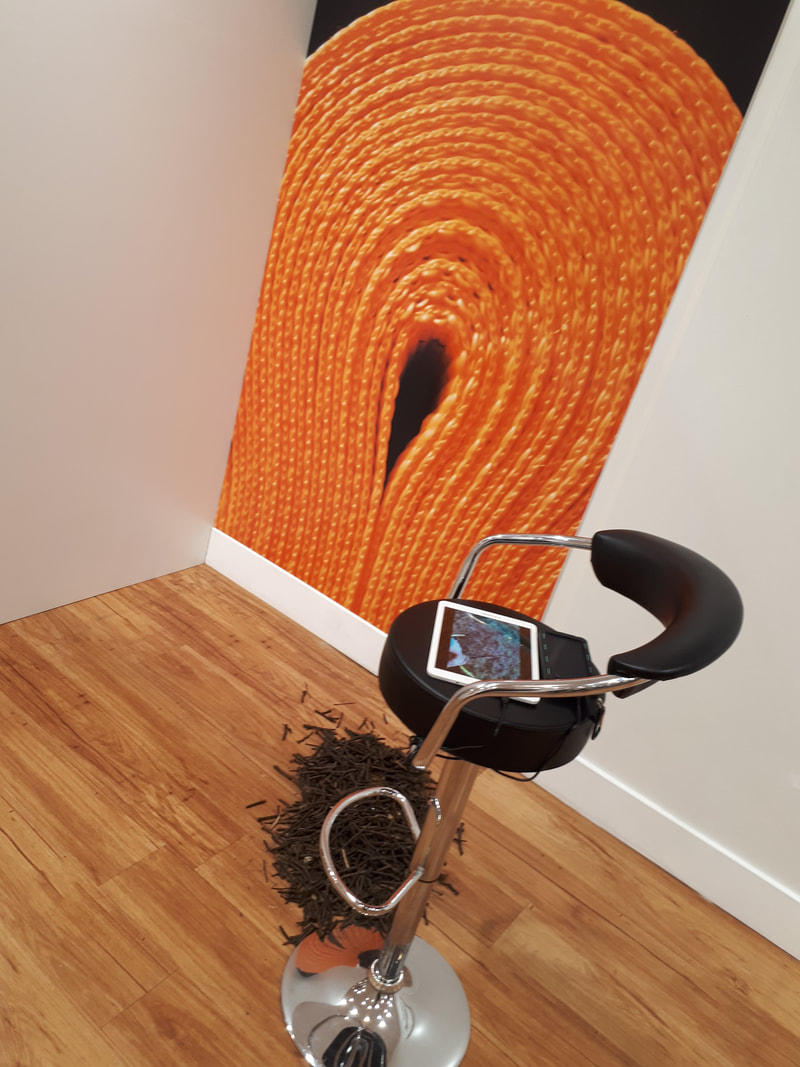
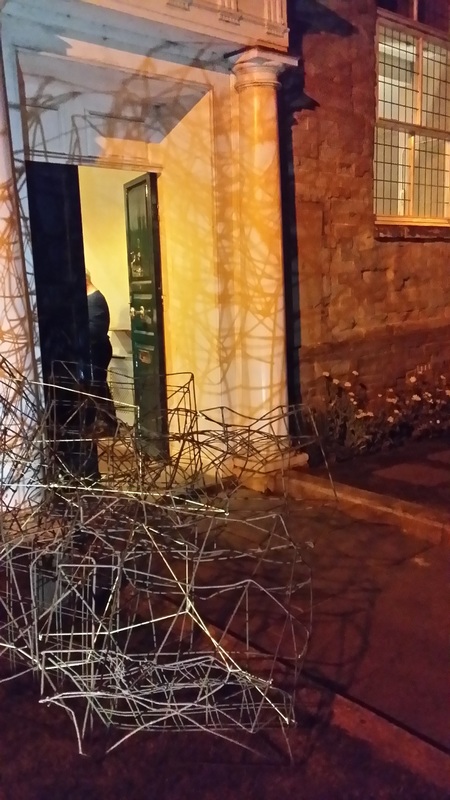
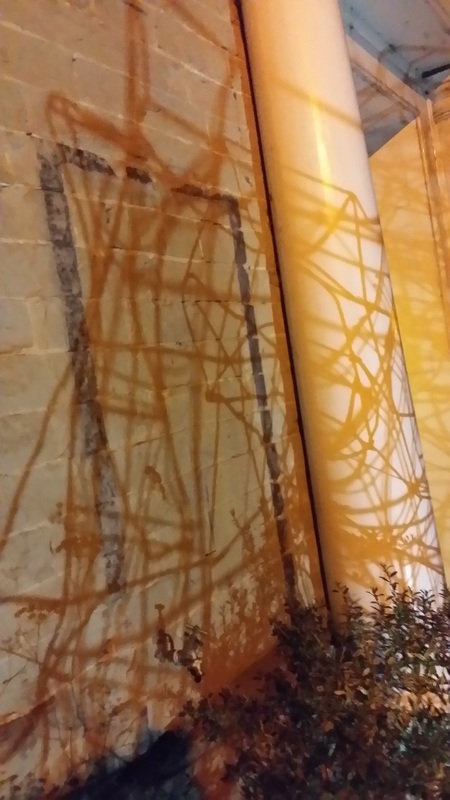
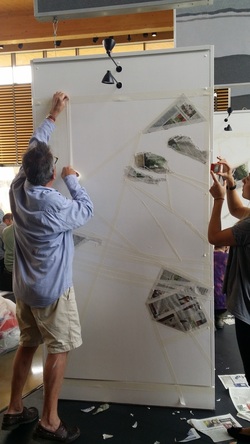
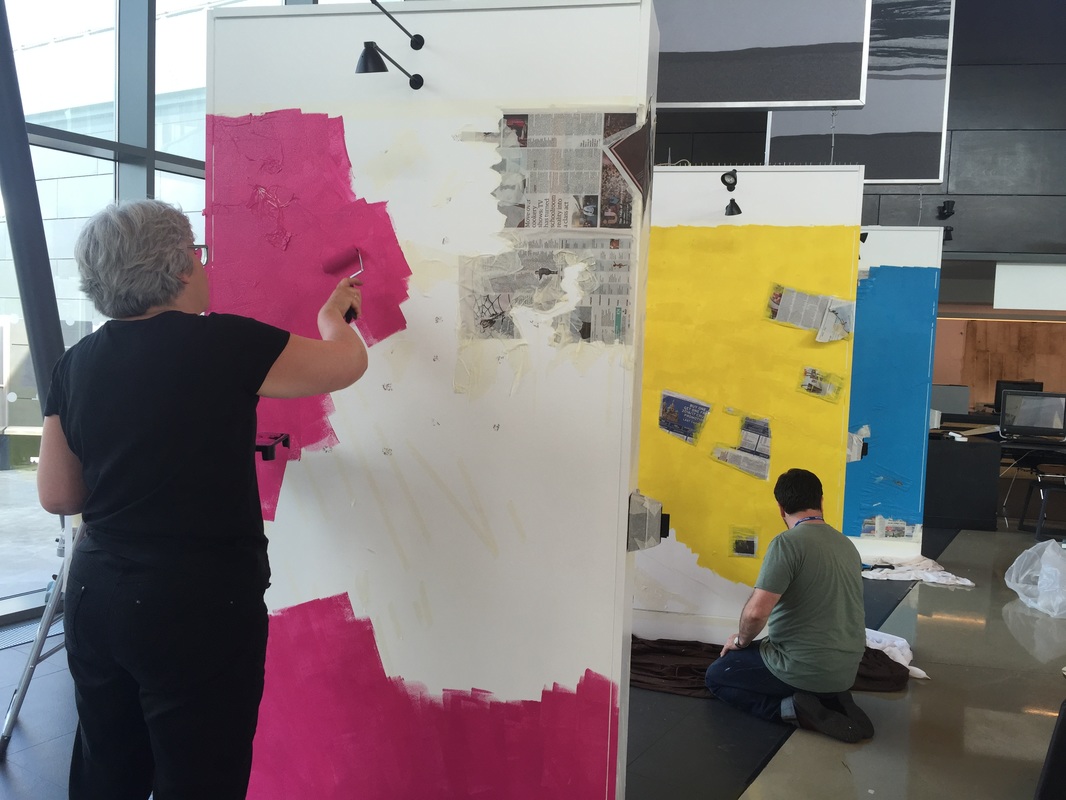
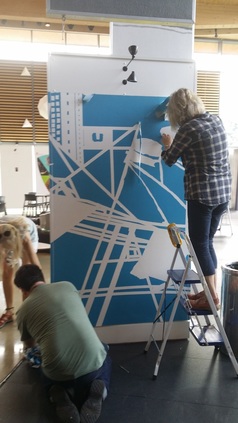

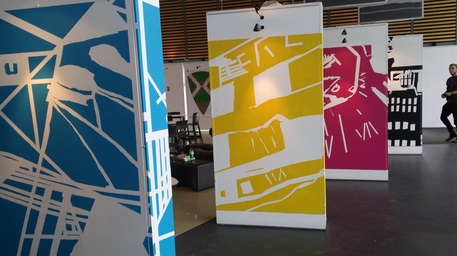
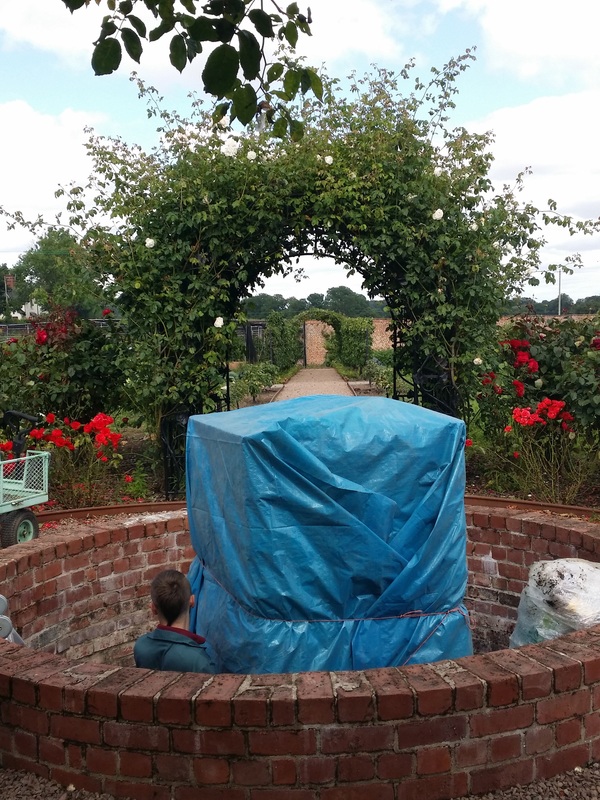
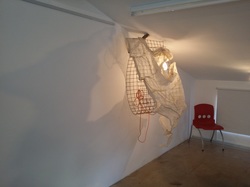
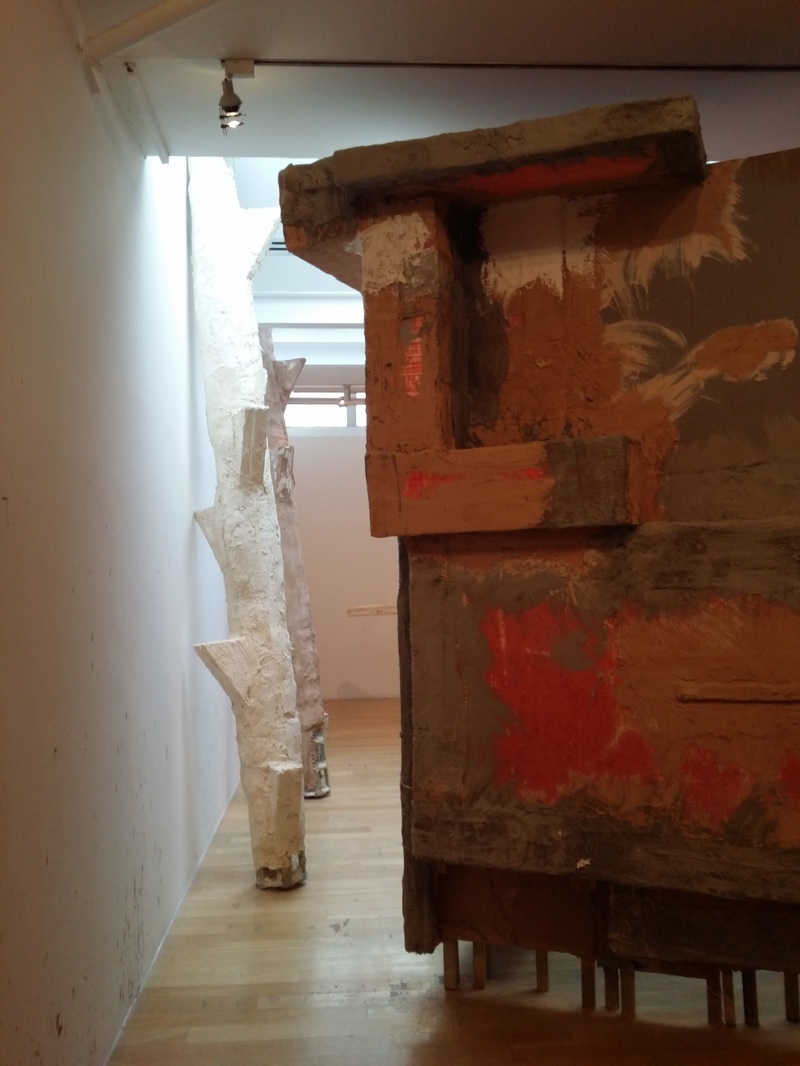
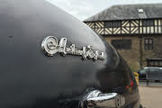
 RSS Feed
RSS Feed